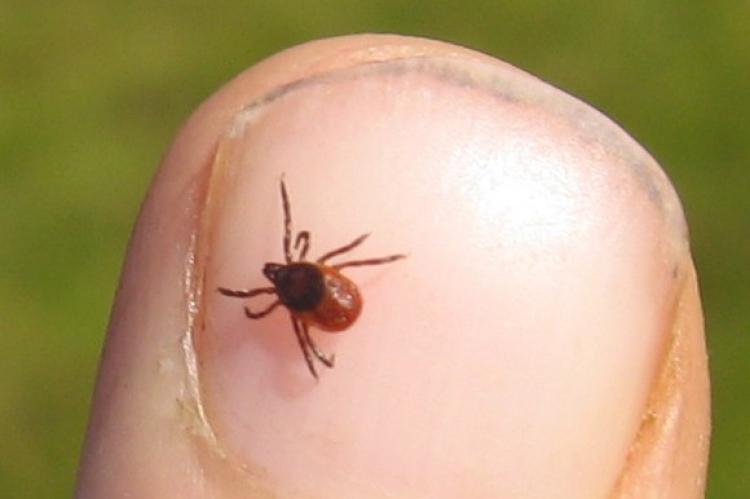
One of our favorite patients just went through extensive treatment for Lime Disease. He never saw the famous “red target” rash and didn’t know he’d been bit. He found no tick; just started feeling generally bad and had a constant slight headache. Then his joints began to ache, particularly his fingers. Finally he went to the doctor and took the simple blood test. Sure enough – Lyme Disease (or as some call it Lyme’s Disease because the first cases were reported in Lyme, Mass).
Spring marks the start of tick season. Ticks like cool, moist weather so they are most active in the spring and fall. We live in a high tick population zone so it makes sense to take precautions. Always look for ticks when you come in form the outdoors. Wear long pants and tuck them into your socks if you visit open fields. Use repellant with Deet, but it is not always effective for ticks.
Most of all, if you begin to feel listless, have a constant headache and joint pain, get your blood tested! A course of antibiotics will beat Lyme Disease if begun early enough. If symptoms go untreated Lyme will morph into chronic arthritis and, in extreme cases, meningitis or Bell’s palsy.
Here is some good Lyme Disease information from the Mayo Clinic:
Symptoms of Lyme disease
The signs and symptoms of Lyme disease vary. They usually appear in stages, but the stages can overlap.
Early signs and symptoms
A small, red bump, similar to the bump of a mosquito bite, often appears at the site of a tick bite or tick removal and resolves over a few days. This normal occurrence doesn’t indicate Lyme disease.
However, these signs and symptoms can occur within a month after you’ve been infected:
- Rash. From three to 30 days after an infected tick bite, an expanding red area might appear that sometimes clears in the center, forming a bull’s-eye pattern. The rash (erythema migrans) expands slowly over days and can spread to 12 inches (30 centimeters) across. It’s typically not itchy or painful but might feel warm to the touch.
Erythema migrans is one of the hallmarks of Lyme disease, although not everyone with Lyme disease develops the rash. Some people develop this rash at more than one place on their bodies.
- Other symptoms. Fever, chills, fatigue, body aches, headache, neck stiffness and swollen lymph nodes can accompany the rash.
Later signs and symptoms
If untreated, new signs and symptoms of Lyme infection might appear in the following weeks to months. These include:
- Erythema migrans. The rash may appear on other areas of your body.
- Joint pain. Bouts of severe joint pain and swelling are especially likely to affect your knees, but the pain can shift from one joint to another.
- Neurological problems. Weeks, months or even years after infection, you might develop inflammation of the membranes surrounding your brain (meningitis), temporary paralysis of one side of your face (Bell’s palsy), numbness or weakness in your limbs. and impaired muscle movement.